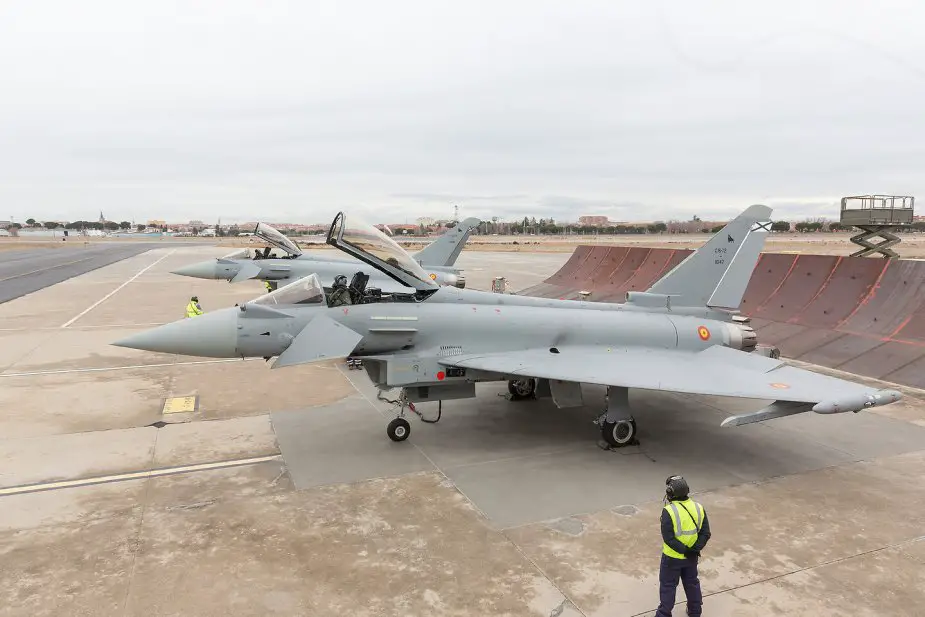According to a PR published by Airbus on June 23, 2022, the NATO Eurofighter and Tornado Management Agency (NETMA) has signed a landmark contract for the acquisition of 20 latest-generation Eurofighter jets.
Follow Air Recognition on Google News at this link
 Spanish Air Force's Eurofighter Typhoon aircraft (Picture source: Airbus)
Spanish Air Force's Eurofighter Typhoon aircraft (Picture source: Airbus)
Known as the Halcon program, the order will cover the delivery of a fleet of E-Scan (Electronically Scanned) radar-equipped fighter aircraft consisting of 16 single-seaters and 4 twin-seaters to replace the F-18 fleet operated by the Spanish Air Force on the Canary Islands.
This contract will see the Spanish Eurofighter fleet grow to 90 aircraft. With the first delivery due in 2026, these new aircraft will enhance and position the Spanish Air Force fighter fleet among its NATO allies with the most modern fighter jet developed in Europe, as well as securing industrial activity through to 2030.
The acquisition, valued at € 2.043 billion, was approved by Spain’s Council of Ministers on 14 December 2021 and includes the aircraft, engines, a simulator, and the necessary support services.
In service with Spain since 2003, the country’s air force operates the Eurofighter from the air bases of Morón (11th Wing) and Albacete (14th Wing), securing Spain’s territory and playing a key role at the heart of NATO in different Air Policing missions in the Baltics and more recently the Black Sea.
With the arrival of these new aircraft, Spain will also equip the third base with Eurofighter jets, namely Gando on the Canary Islands, which is home to the 46th Wing.
About Eurofighter Typhoon fighter
The Typhoon was designed originally as an air superiority fighter[5] and is manufactured by a consortium of Airbus, BAE Systems, and Leonardo that conducts the majority of the project through a joint holding company, Eurofighter Jagdflugzeug GmbH.
The Typhoon is armed with a specially developed variant of the Mauser BK-27 27 mm cannon that was developed originally for the Panavia Tornado. This is a single-barrel, electrically fired, gas-operated revolver cannon with a new linkless feed system located in the starboard wing root, and is capable of firing up to 1700 rounds per minute.
















